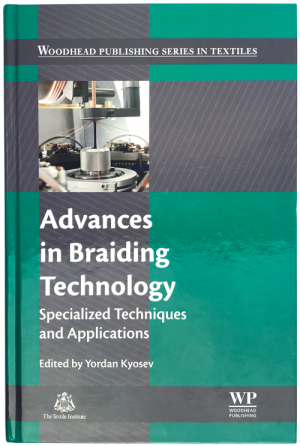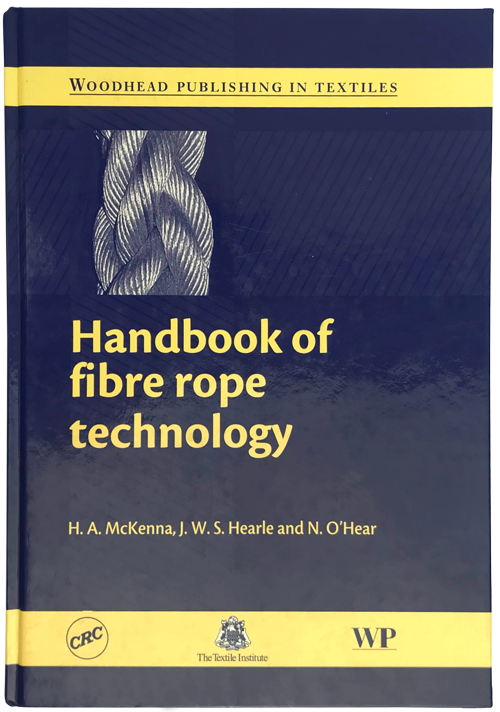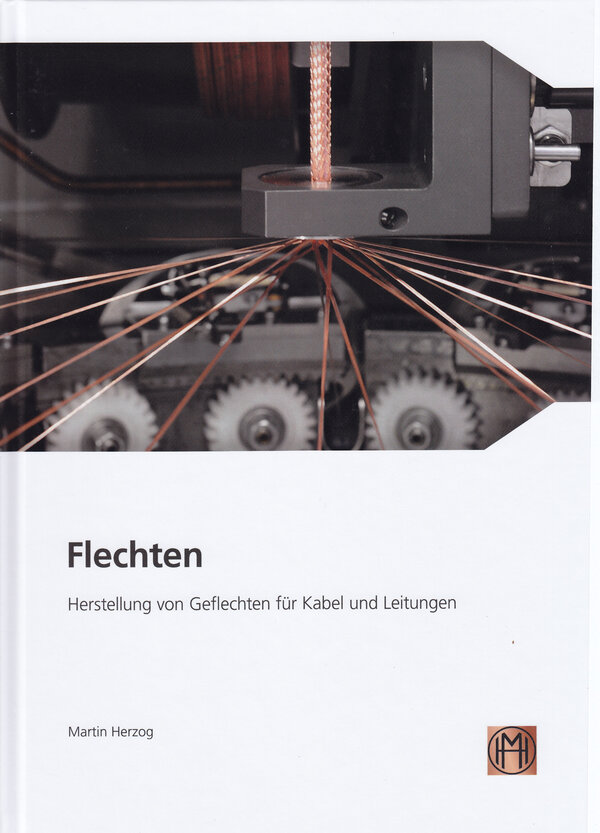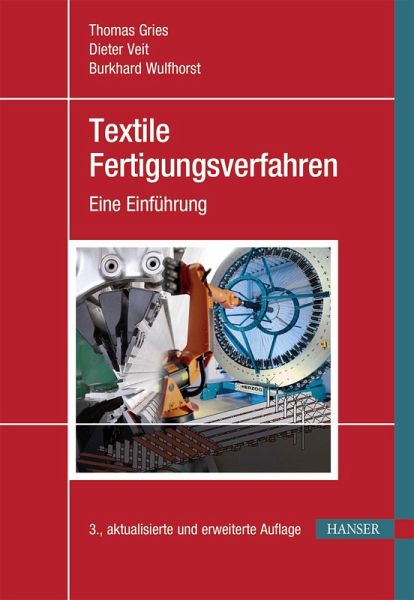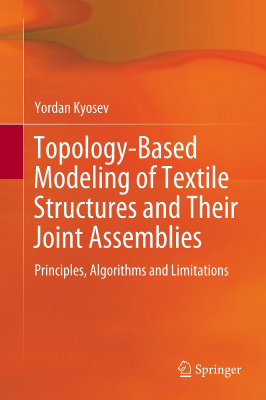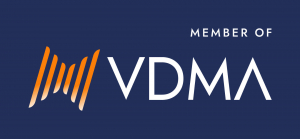Литературные рекомендации по плетению.
ADVANCES IN BRAIDING TECHNOLOGY
- Covers advanced braiding techniques, technical applications, modelling and simulation of braided textiles
- Focused on the needs of the textile industry by offering suitable breadth and depth of coverage of a range of braiding manufacturing technology, applications and modelling techniques in a single volume
- Written by an eminent team of authors, composed of leading scientists and developers in the field, who have a wealth of relevant, first-hand experience in braiding. Edited by a high-profiled editor who is an expert in his field
- Issued by: Elsevier Science & Technology (05 April 2016)
- Language: English
- ISBN-13: 978-0081009260
- Dimensions: 22,9 x 15,2 cm, 760 pages
- Obtain via the book trade
Description
Braiding is the process of interlacing three or more threads or yarns ia a diagonal direction to the product axis in order to obtain thicker, wider or stronger textiles or, in the case of overbraiding, in order to cover a profile. Braids are becoming the reinforcement of choice in composite manufacturing and have found a range of technical applications in fields including medicine, candles, transport and aerospace. Based on the information provided in Prof. Kyosev’s previous book «Braiding Technology for textiles» this important title covers advanced technologies and new developments for the manufacture, applications and modelling of braided products.
BRAIDING TECHNOLOGY FOR TEXTILES
- Provides a solid foundation of braiding design, processes and machinery
- Covers the patterning of braided products and the structural and colour design of both flat and tubular braids
- Explains maypole braiding machines and mechanics
- Issued by: Elsevier Science & Technology (14 October 2014)
- Language: English
- Hardback edition: 250 Pages
- ISBN-10: 0857091352
ISBN-13: 978-0857091352 - Dimensions: 23,4 x 15,6 x 2,6 cmObtain via the book trade.
Description
Braided fabrics are made by interlacing yarns or strips of fabric. Braiding produces a wide range of structures for technical textile applications from medical sutures to cables for anchoring ships. Written by one of the world’s leading experts in the field, the book reviews the basic principles, design and processes used in braiding. The book also discusses specialised braiding techniques such as spiral braiding and lace technology.
FLECHTTECHNOLOGIE
SCHMUCKTEXTILIEN – TECHNISCHE TEXTILIEN
- Authors: Prof. Dr. Harald Engels, Kurt Brabender, Dipl.-Ing. Peter Moeller
- Language: German
- Issued by: Industrieverband Deutscher Bandweber und Flechter e.V.
- Sold out
Description
The publication is aimed at the target group of trainees, trainers and vocational school teachers for the training of textile manufacturers, specialised in braiding technology. It can also be used in the training of industrial managers, technicians or for engineering studies. Furthermore, it is aimed at all those interested in braiding technology used in rope braiding and cable manufacturing.
HANDBOOK OF FIBRE ROPE TECHNOLOGY
- The Handbook of fibre rope technology is an essential reference for everyone assisting in the design, selection, use, inspection and testing of fibre rope
- Authors: H.A. McKenna, John W.S. Hearle, N.O’Hear
- Language: English
- Issued by: CRC Press
- ISBN-10:0849325889
ISBN-13:978-0849325885 - Obtain via the book trade
Description
The field of fibre rope technology has witnessed incredible change and technological advance over the last few decades. At the forefront of this change has been development of synthetic fibers and modern types of rope construction. This handbook updates the history and structural mechanics of fibre rope technology and describes the type of modern rope-making materials and constructions. Following an introduction to fibre ropes, the handbook of fibre rope technology takes a comprehensive look at rope-making materials, rope structures, properties and mechanics and covers rope production, focusing on laid strand, braided, low-twist and parallel yarn ropes. Terminations are also introduced and the many uses of ropes are illustrated. The key issues surrounding the inspection and retirement of rope are identified and rope testing is thoroughly examined. The final two chapters review rope markets, distribution and liability and provide case studies from many environments in which fibre rope is used.
Braiding
Manufacture of braids for cable and wires
- Author & issued by: Martin Herzog
- Hardcover, 59 pages
- Language: English
- Year of publication: 2021
- ISBN-10:3-9823546-1-7
- ISBN-13:978-3-9823546-1-3
- To be orderd from the author.
Description
The book vividly describes the process of braiding.On 60 pages with more than 40 pictures, he conveys in simple terms the basic knowledge for the production of braids in cable manufacturing. In doing so, he goes into detail about the two main machine types, the bobbin braider and the rotary braider, compares the processes with each other and shows their advantages and disadvantages. The calculation of the essential braiding parameters is presented with simple formulas and supplemented with examples. The book fills a gap in the technical literature for cable production. It is both an intro-duction for young technicians and a summary of the state of the art for experts, providing suggestions for process improvements.
TEXTILE FERTIGUNGSVERFAHREN
EINE EINFÜHRUNG
- Markets, trade and raw materials
- Processes and machines for: Yarn production, fabric production, knitted fabric production, braid production, scrim production, textile finishing
- Technical textiles, textile floor coverings, textile testing, disposal of textiles, simulation of textile processes, Industry 4.0
- Authors: Gries, Veit, Wulfhorst
- Language: German
- Issued by: Hanser, Carl
- Year of publication: 2018
- ISBN: 978-3-446-45866-6
- Pages: 545
- Obtain via the book trade
Description
This textbook describes the entire process chain of textile manufacturing processes using state-of-the-art technology. In particular, the further development of classic textiles for demanding applications in the technical sector (technical textiles) is comprehensively described. Due to numerous new developments in textile technology, the book has been fully updated and partly rewritten and is now available in its third edition. Textile floor coverings and textile products of the future have been newly included. At the end of almost every chapter, three product examples of the respective process stage are explained, creating a continuous link throughout the book. Future developments are presented in each chapter under the section ‘Development directions’. The contents of the book are very practice- and application-orientated.
TOPOLOGY-BASED MODELING OF TEXTILE STRUCTURES AND THEIR JOINT ASSEMBLIES
PRINCIPLES, ALGORITHMS AND LIMITATIONS
- Author: Dr. Yordan Kyosev
- Language: English
- Issued by: Springer International Publishing
- Year of publication: 2019
- eBook ISBN: 978-3-030-02541-0
- ISBN: 978-3-030-02540-3
- Pages: 238
- To obtain via book trade
Description
This book presents the textile-, mathematical and mechanical background for the modelling of fiber based structures such as yarns, braided and knitted textiles. The hierarchical scales of these textiles and the structural elements at the different levels are analysed and the methods for their modelling are presented. The author reports about problems, methods and algorithms and possible solutions from his twenty year experience in the modelling and software development of CAD for textiles.

